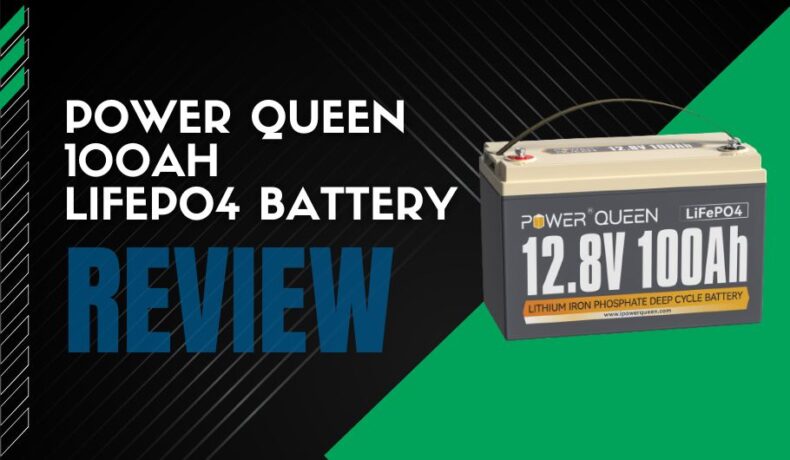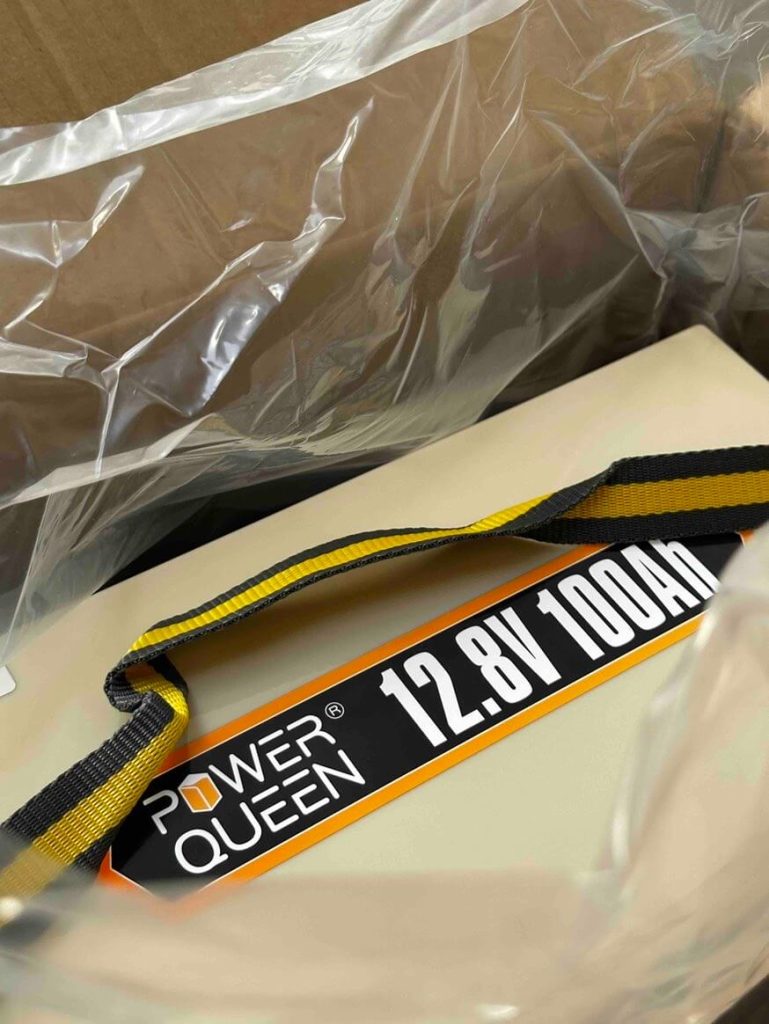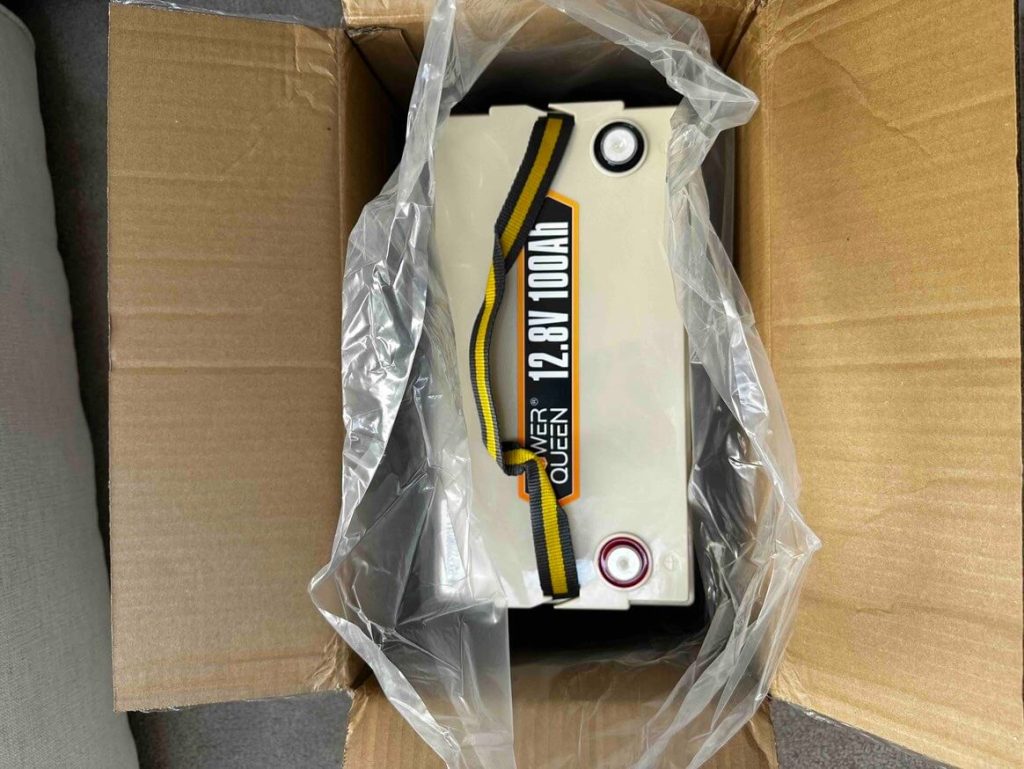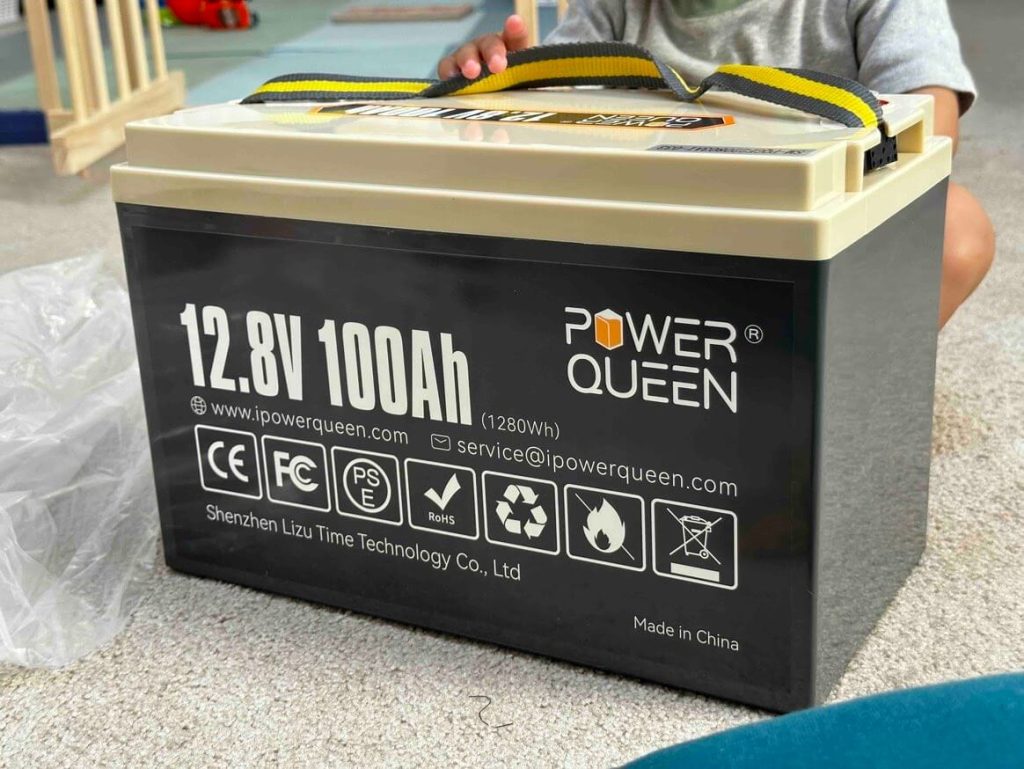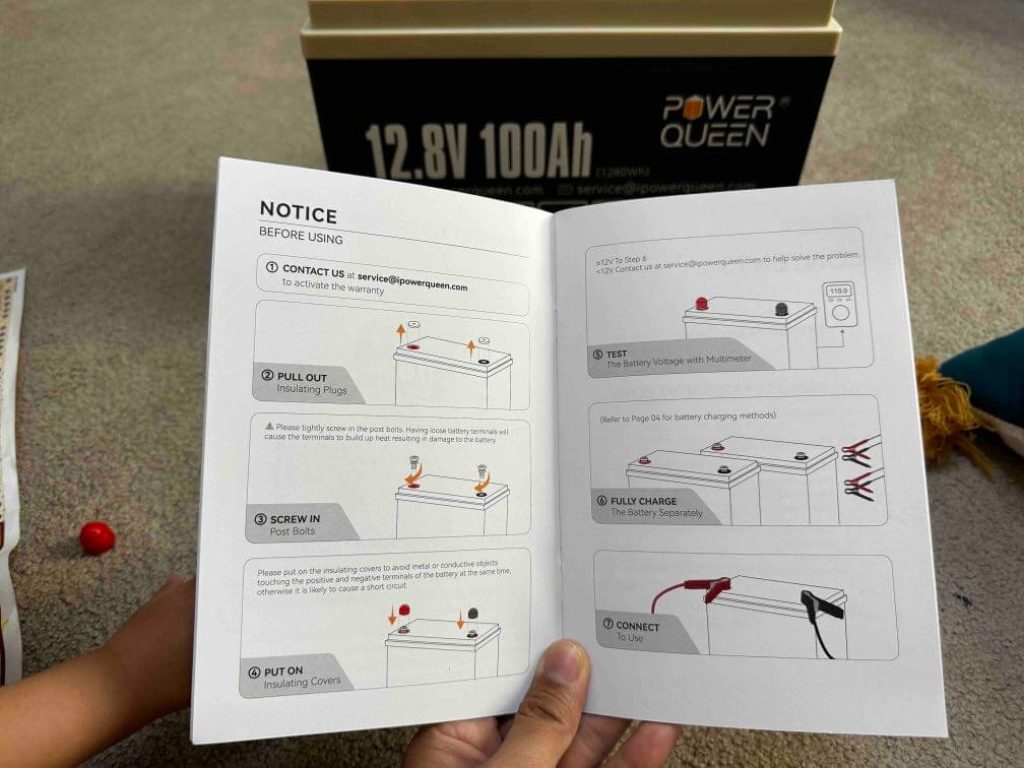The Power Queen Crew recently asked us to review their 12.8V 100Ah LifePO4 Battery.
Upon arrival, we conducted charge-discharge cycle tests to determine whether the theoretical 1280Wh energy capacity was correct.
After a series of trials, data gathering, and some thinking, we believe the Power Queen 12.8V 100Ah LifePO4 Battery is a budget-friendly lithium-ion battery that is perfect whether it stays in your home, trailer, or RV.
We do not recommend this product as your on-the-go power supply for outdoor camping. It will require too much setup and tear-down time. Not to mention, a bare solar setup with exposed terminals is highly susceptible to the elements. Instead, we recommend you use a PPS.
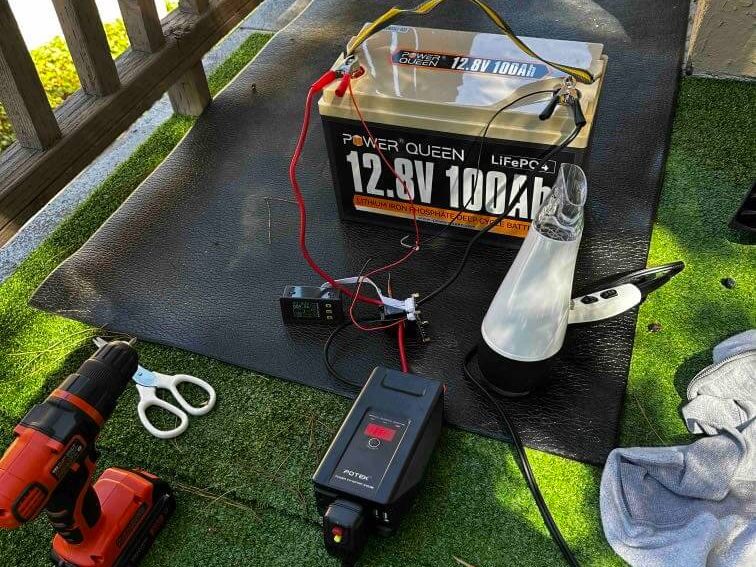
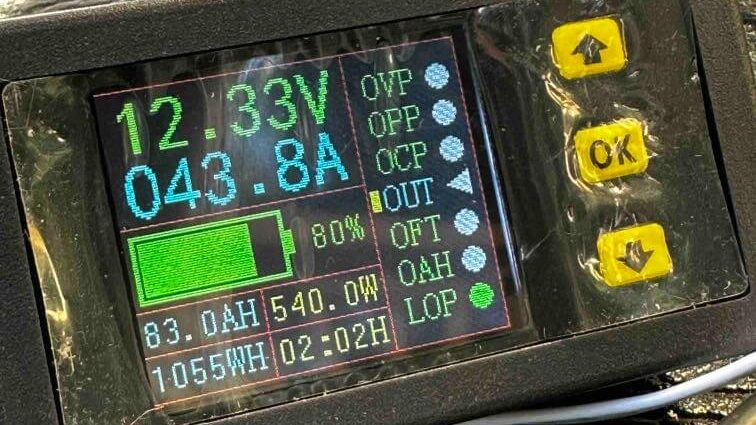
So, without further ado, it’s time for you to find out why now is the perfect time to buy LFP batteries and how they blow SLA out of the water.
Table of Contents
Recent Trends Regarding LifePO4
Among the lithium-ion battery types, experts expect LifePO4 Lithium-Ion (LFP) to gain market share in the future. The main reason manufacturers are shifting to LFP is to reduce their dependency on the price of certain raw materials.
SLA Vs. LFP
Many comparative studies support the claim that LFP surpasses its predecessor, the sealed lead acid (SLA) chemistry, in techno-economic categories.
Simply put, LFP has better battery performance and offers a better bang for your buck.
The growing preference for LFP over SLA and other lithium-ion variants is all thanks to recent trends showing lower LFP prices per energy unit ($/kWh).
What is driving this trend?
LFP Vs. Other Lithium-Ions
Based on our research, major EV players like Tesla want to reduce dependency on high-cost battery raw materials (e.g., Cobalt and Nickel). Instead, they are turning to LFP as the most viable cell chemistry, optimizing it for various applications such as appliances, EVs, and solar generators.
Is LFP the king of lithium-Ion? It depends on the application and features you are looking for, but the main observation is the downward price trend.
Most of us agree that the 90% lithium-ion price drop from the past decade is insane. 100Ah LFP batteries nowadays range between $300 and $400, from $600-$800 a couple of years back.
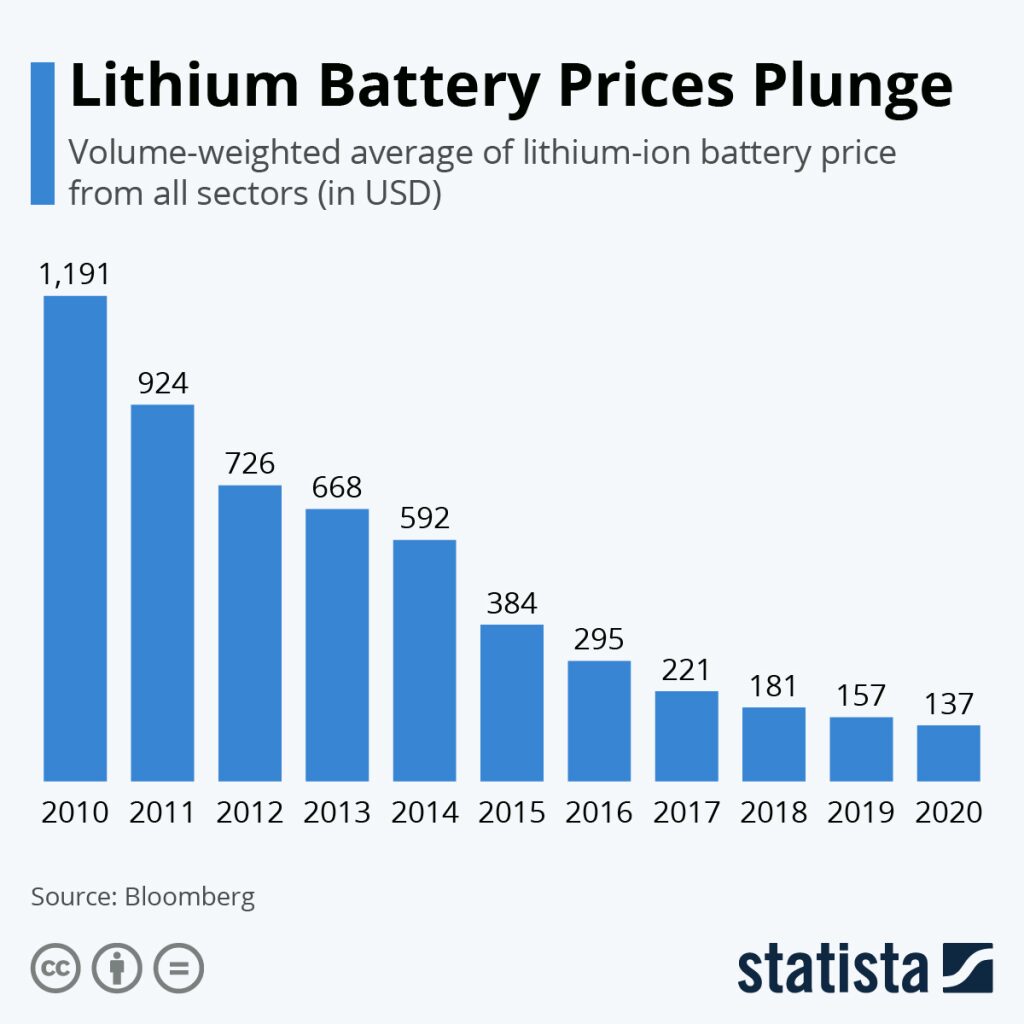
Source: Statista.com.
As a result, many LifePO4 battery brands have been popping up left and right on well-known e-commerce sites like Amazon.
Why Research And Reviews Matter
While common sense dictates that competition is an excellent way to drive the price down, it presents a significant problem for average Joe and plain Jane.
“Why?”
There is a good chance ordinary consumers will get overwhelmed by all the choices available. The last thing we want is for you to buy or overpay for something you don’t need.
“Aren’t they just all the same? What’s the difference performance-wise?”
That is why we are starting these green energy product reviews to help your decision-making process. Sure we get these sweet products from companies who want testimonies from experts. However, our partner companies don’t influence our opinions.
Let’s begin this review of the Power Queen 12.8V 100Ah LifePO4 Battery.
Power Queen 12.8V 100Ah LifePO4 Battery Technical Details
Based on stats alone, we can tell the Power Queen 12.8V 100Ah LifePO4 Battery is best utilized for static applications such as your home or RV energy storage system.
100Ah batteries like this one are more suited to be stacked together to form a pseudo-Powerwall depending on your power and energy needs.
Main Features
Main Product Features Include:
- Lightweight (about half the weight of lead acid products)
- 5-year warranty
- Modular (can be connected in parallel or series)
- 100A BMS
- Outstanding Post-Purchase Service (according to other e-commerce reviewers)
- Good Longevity – 4000 Cycles at 1280Wh, but we will verify this via charge and discharge tests.
Earlier, we mentioned that LFP blows SLA out of the water in terms of cost-effectiveness.
This is why:
| Specification | Power Queen LFP | Renogy SLA |
|---|---|---|
| Nominal Voltage | 12.8V | 12V |
| Max. Continuous Charge/Discharge Current | 100A | 30A |
| Weight | 24.25 lbs | 63.9 lbs |
| Dimension | 13 x 6.82 x 8.48 inches | 13.1 x 6.9 x 8.6 inches |
| Cycles | 4000A | Undisclosed |
| Ideal Depth of Discharge | 80% | 50% |
| Warranty | 5 years | 2 years |
Currently, the price difference between these two products is about $150, tax included. You be the judge if better portability, battery longevity, and depth of discharge are worth that.
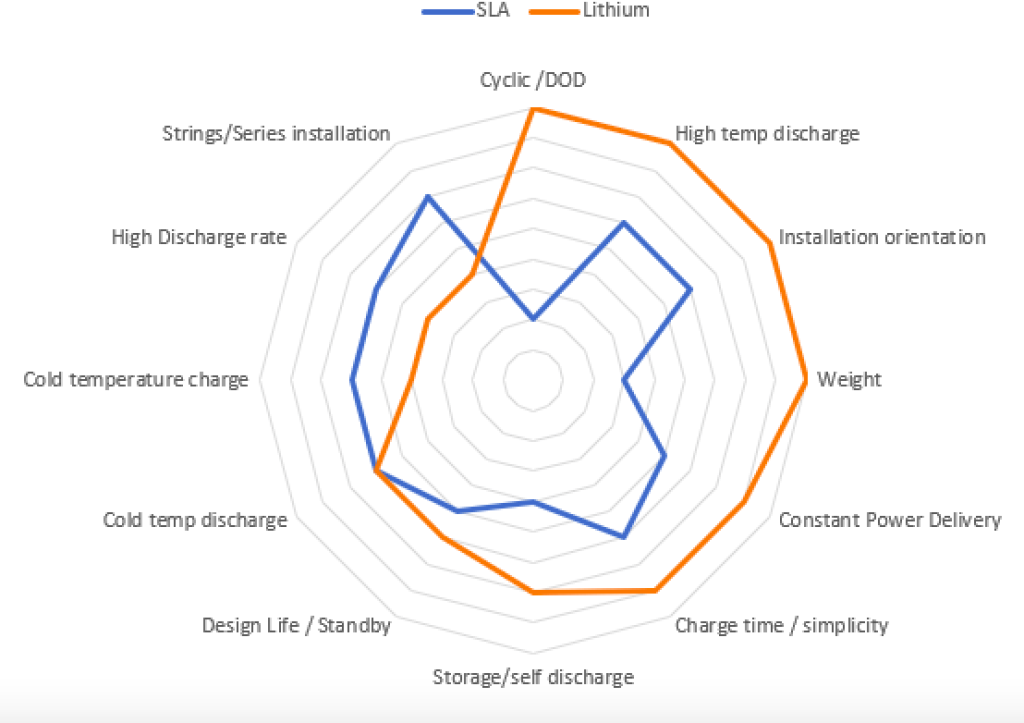
Source: Power-Sonic.com
Warranty-wise, you should know they are only valid if the companies exist by the time you claim them. This is where company reputation is essential. Power queen is a relatively new player compared to Renogy and is still making a name for itself. The company is founded by battery engineers with more than a decade of experience in the battery realm.
Therefore, we can make the case that the table above and other studies make it compelling to choose LFP over SLA and AGM.
“So what is the use of SLA and AGM nowadays?”
That is another tale for another day, friend.
Let’s proceed to the unboxing.
Power Queen 12.8V 100Ah LifePO4 Battery: First Impressions
The Power Queen 12.8V 100Ah LFP Battery came within the standard 7-day delivery timeline. The box wasn’t absurdly challenging to carry from the front door to the living room. The carton packaging isn’t the best in the world, but that may translate to extra production line savings (either for the company, for us, or both. who knows, right?)
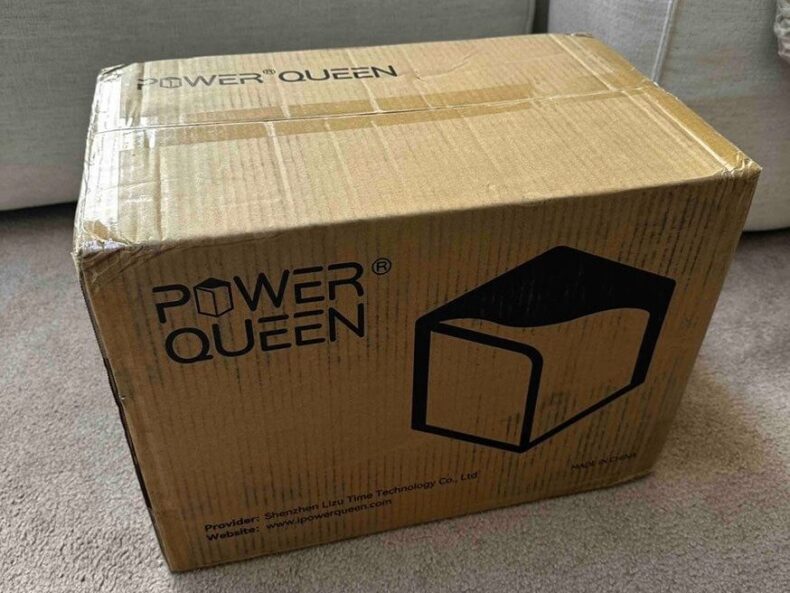
Unboxing Experience
We took out a box cutter to look at what was inside and were greeted with the 5-year warranty card and foam protector.
The battery itself is wrapped in plastic for extra protection.

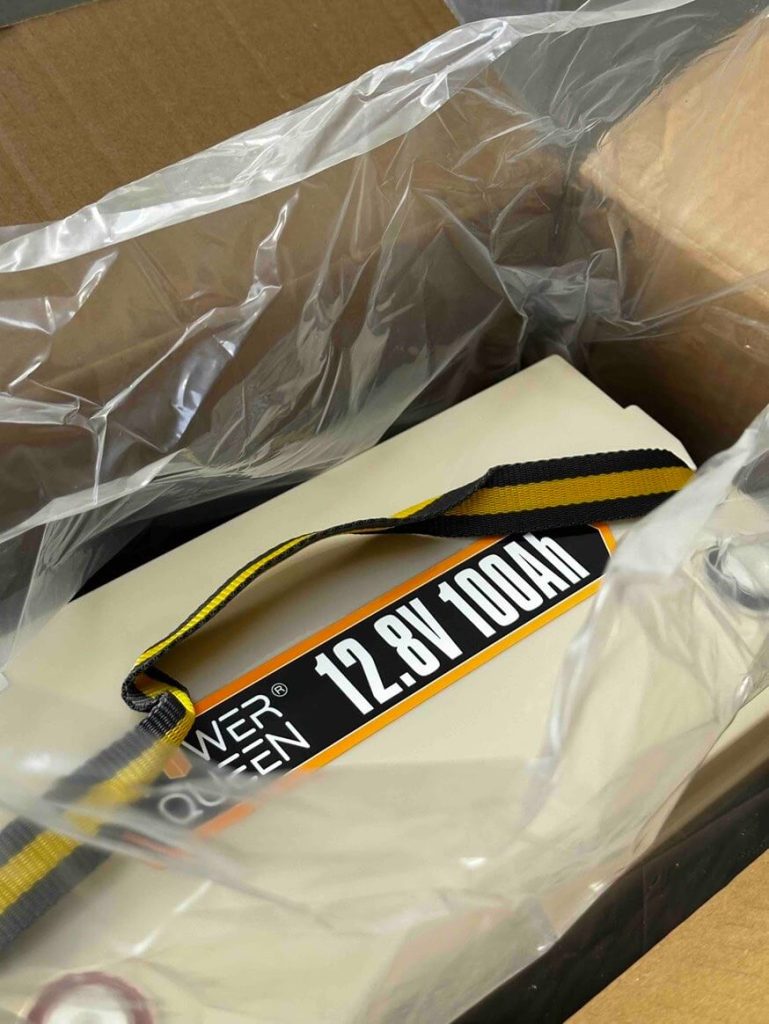
Foam and plastic protection for safety.
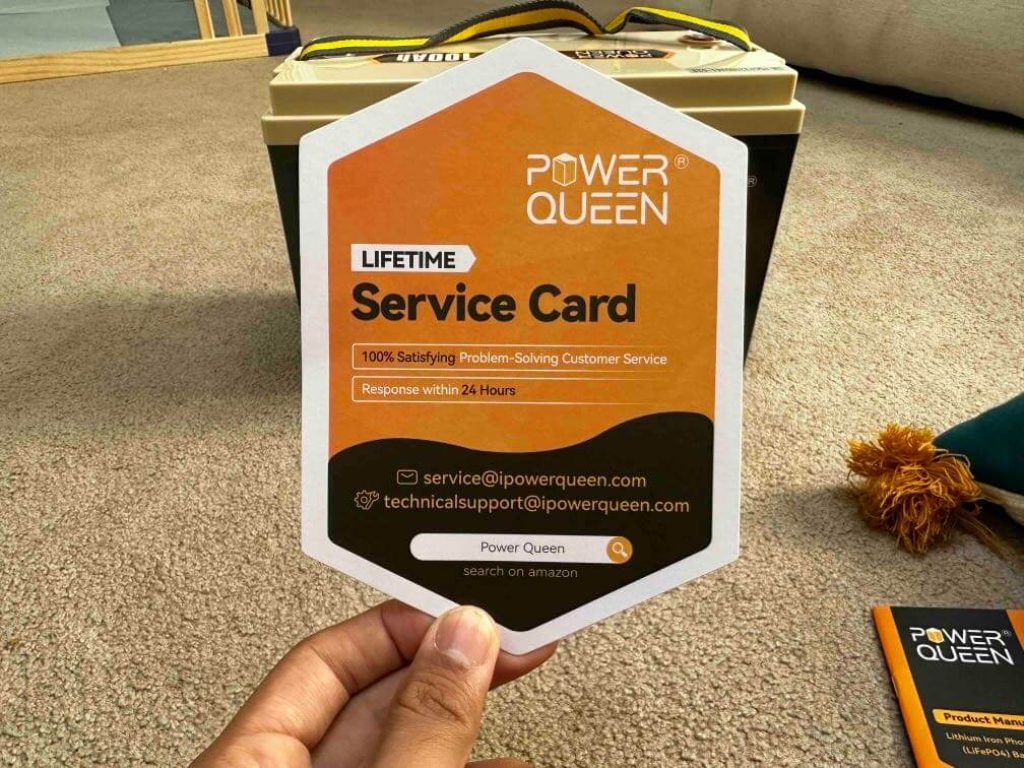
Power Queen 12.8V 100Ah LifePO4 Battery: Materials and Aesthetics
We’re not going to lie housing batteries in plastic usually makes it look cheap. We cannot say the same for the Power Queen. It is glossy plastic but has a sturdy feel to it. The battery strap provides sufficient support without making you worry while carrying it up and down the stairs.
The housing is IP65-rated. Not the best in the world, so it is essential to identify water hazards when setting this up with other electrical components.
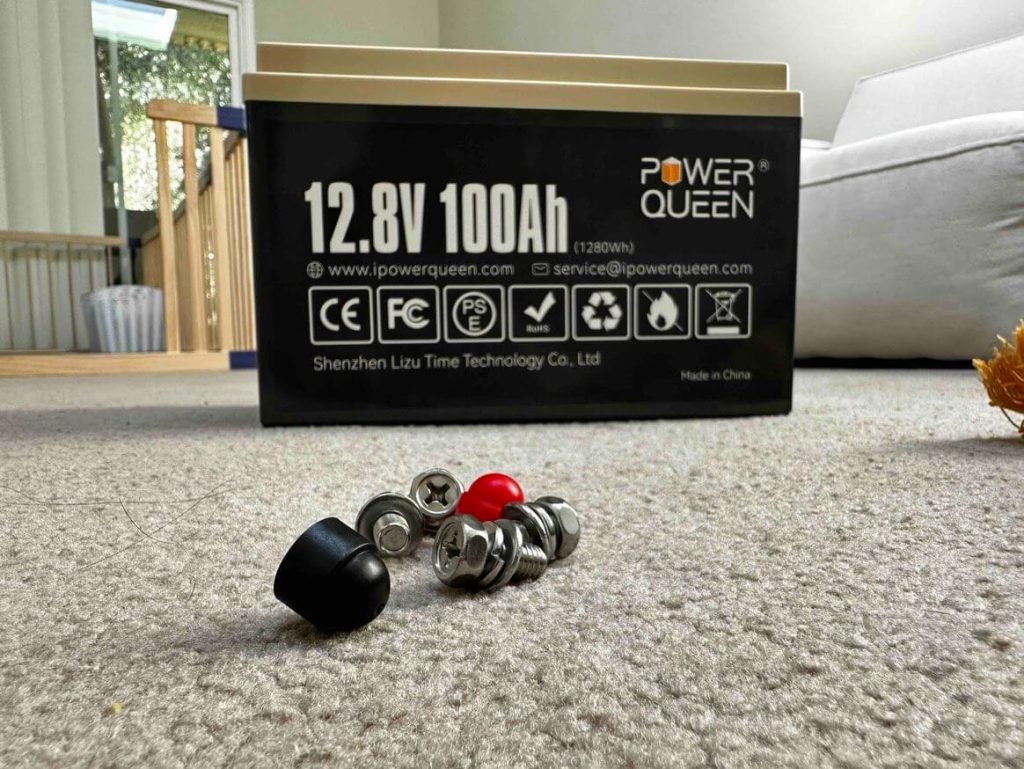
Overall, pleasing aesthetics with some weather-resistant features.

Terminals are color-coded red and black to indicate positive and negative, respectively—an underrated but crucial safety feature.
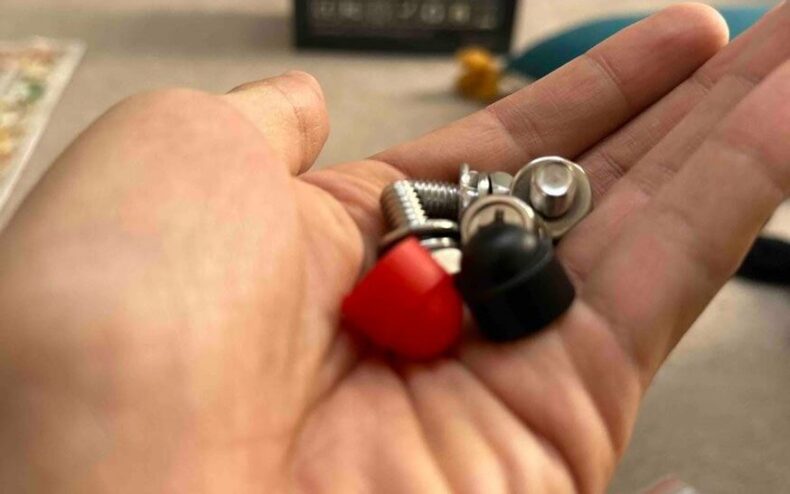
Unboxing Gallery
What Can the Power Queen 12.8V 100Ah LifePO4 Battery Power?
What can you run off this 100Ah Battery?
The Power Queen 12.8V 100Ah can power anything with a suitable inverter.
What’s left is a needs assessment. To do that, you need to figure out: (1) How many appliances you want to power; and (2) for how long on a typical day or week.
We’ll demonstrate this in a sample Power, and Energy Needs Planning Process for further understanding.
Practical Application of Power Queen 12.8V 100Ah LifePO4 Battery
A needs assessment consists of the following steps:
- Write Down Your Appliances
- Add Power Ratings
- Estimate Running Hours
- Compute Total Daily Energy Needs
Power And Energy Needs Planning
Say you are planning to DIY an off-grid cabin solar system. Here is what the finished planning process looks like from an energy storage standpoint.
| Typical Appliances | Rated Power | Running Hours | Energy Consumption |
|---|---|---|---|
| Coffee Maker | 1100 W | 0.1 | 110 |
| Microwave | 800 W | 0.15 | 120 |
| Regular Refrigerator / Freezer | 700 W | 24 | 5,600 |
| Toaster | 800 W | 0.1 | 80 |
| Laptop and Cellphone | 100 W | 5 | 500 |
| Lightbulbs | 150 W | 5 | 750 |
| Airconditioner | 1200 W | 8 | 3,200 |
| Total Solar Panel Size | 4,850 W | 10,360 Wh |
From the looks of it, you will need 10 kWh a day. That means stringing together at least 10 Power Queen 12.8V 100Ah batteries in a series-parallel configuration if you want backup energy (1280 watt-hours multiplied by 10 is 12,800Wh).
Of course, it is entirely up to you and your budget how many days of reserve energy you want.
Confirm The Actual Energy Capacity of the Power Queen 12.8V 100Ah LifePO4 Battery
Now, some of you who are on a tight budget are probably thinking:
“12,800Wh is too much for this case. I’d buy nine (9) and save hundreds of dollars if it were me!”
Then you proceed to pat yourself on the back.
While you’re chuckling over there, we want to say that we agree with your reasoning. To confirm this theory, we have to determine the actual energy capacity of the Power Queen 12.8V 100Ah LifePO4 Battery.
After all, the 1280Wh claim might not be accurate.
Let’s conduct a charge-discharge test and see how close we can come to 1280Wh.
Capacity Testing
Capacity tests are one of those simple yet satisfying things you can do to confirm a battery’s energy rating.
In our setup, we made use of the following components:
- AC Battery Charger or Solar Panel with Charge Controller
- Energy Meter
- Load
- Inverter
- Wires and Cables
- Power Tools
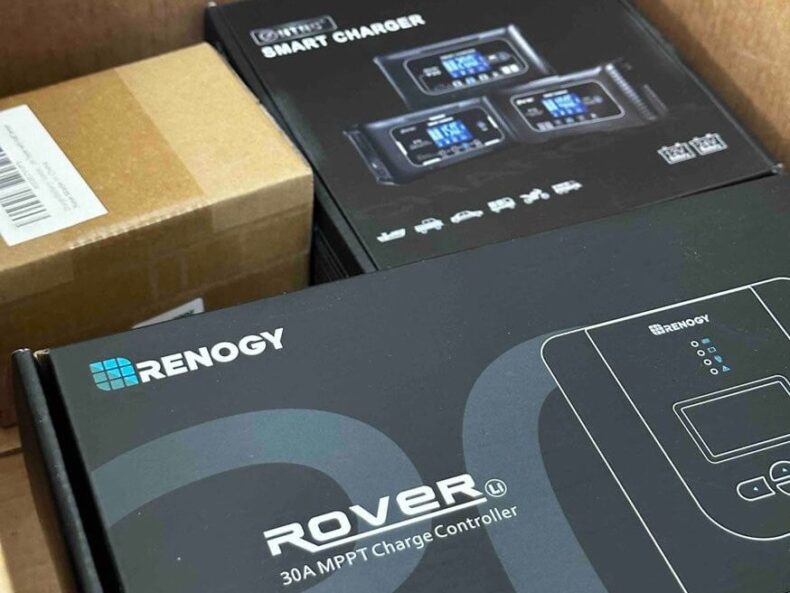
Before beginning your discharge test, ensure that you have fully charged your LFP battery. In our case, we used a combination of AC battery chargers or solar panels hooked to an MPPT charge controller.
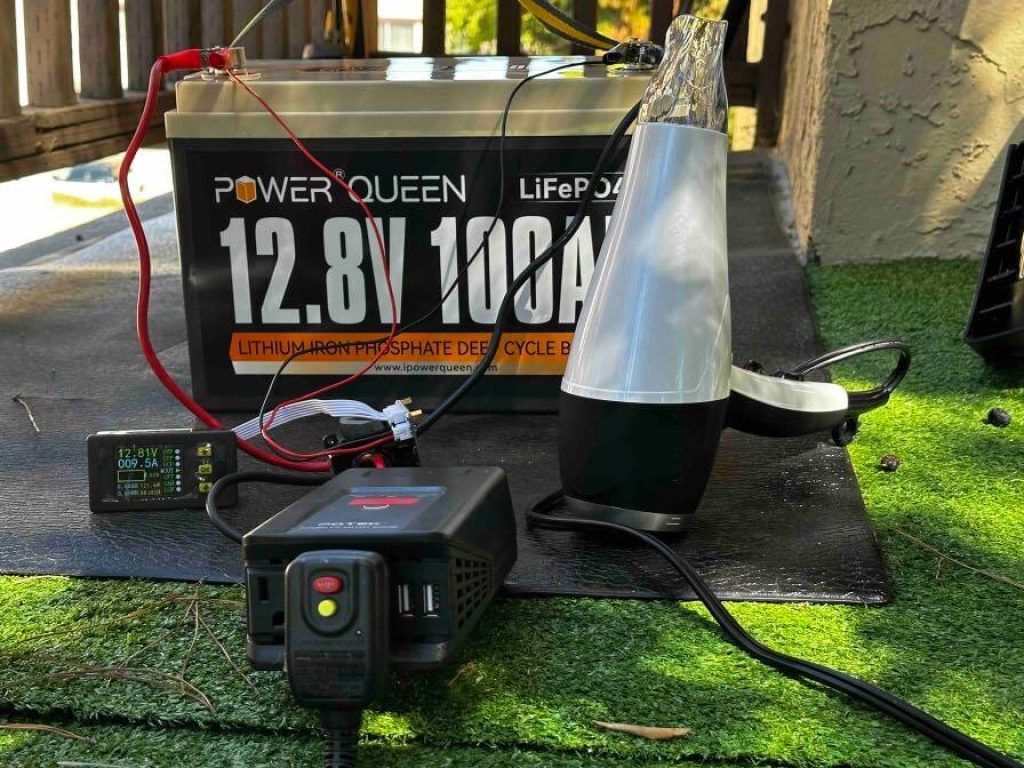
Estimating the State Of Charge
How will you know that your battery is charged sufficiently? Look at the nominal voltage readings. There is a direct correlation between open circuit voltage and state of charge. In the academe, this is referred to as the OCV-SOC relationship.
Therefore, if your meter reading indicates 12.8V or more, you have a sufficiently charged battery. Compare this to an 11.39V reading before your battery disconnects itself from the load.
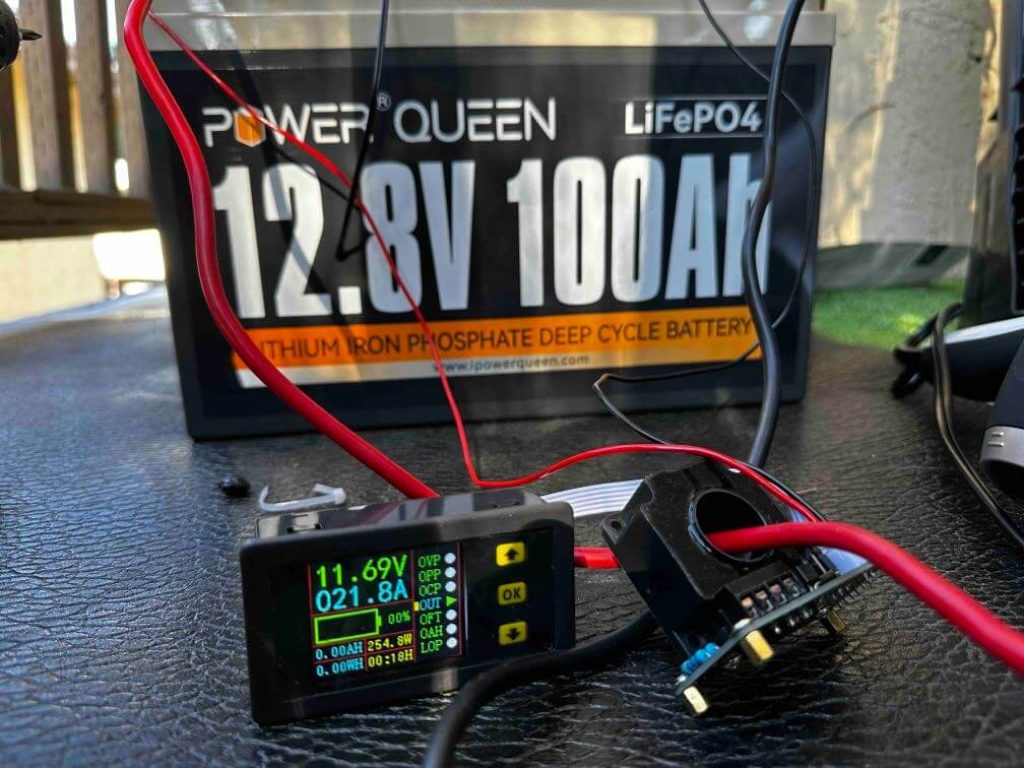
Once you have a fully charged battery, we can begin the discharge test by hooking your battery to an inverter that converts 12V DC to 120V AC.
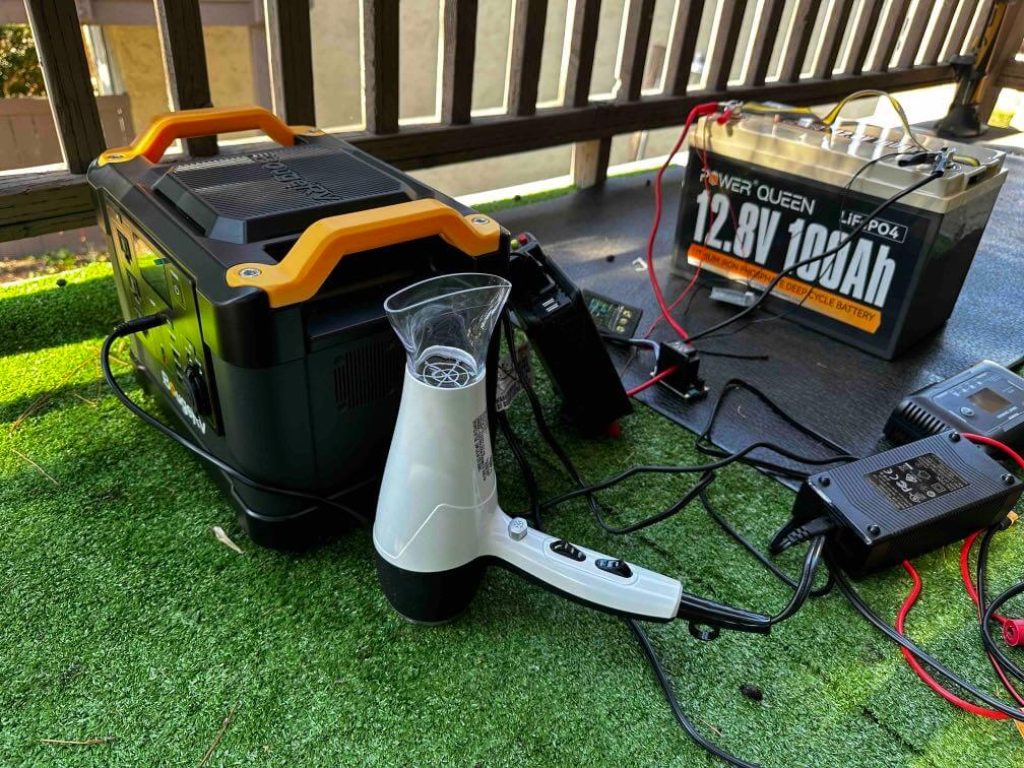
Capacity Test Result
We ran various charge-discharge tests in the past weeks, and the results are pretty much the same for 100W to 500W loading conditions.
The actual capacity of the Power Queen 12.8V 100Ah LifePO4 battery falls around 1205 to 1220 Wh. That is 95% of the 1280Wh rating. Looks good to us!
Should You Buy 9 or 10?
Going back to our sample planning scenario earlier, buying 9 of these will give you a total of:
1,205Wh x 9 units = 10,845Wh
10,845Wh > 10,360Wh
It turns out you can save money and still have one day’s worth of stored energy! Congratulations!

Final Thoughts
Should you buy this? For us, it is a yes. The test verifies the capabilities of the Power Queen 12.8V 100Ah LifePO4 Battery, and LFP is indeed one of the top considerations for modern energy storage applications.
We acknowledge the credentials of Power Queen, being in the battery industry for decades. In the future, it would be reassuring to see independent third parties publish long-term studies or simulations to verify whether prismatic LFP (the material used in this product) holds up to 4000+ cycles before degrading to 80% of its rated energy.

